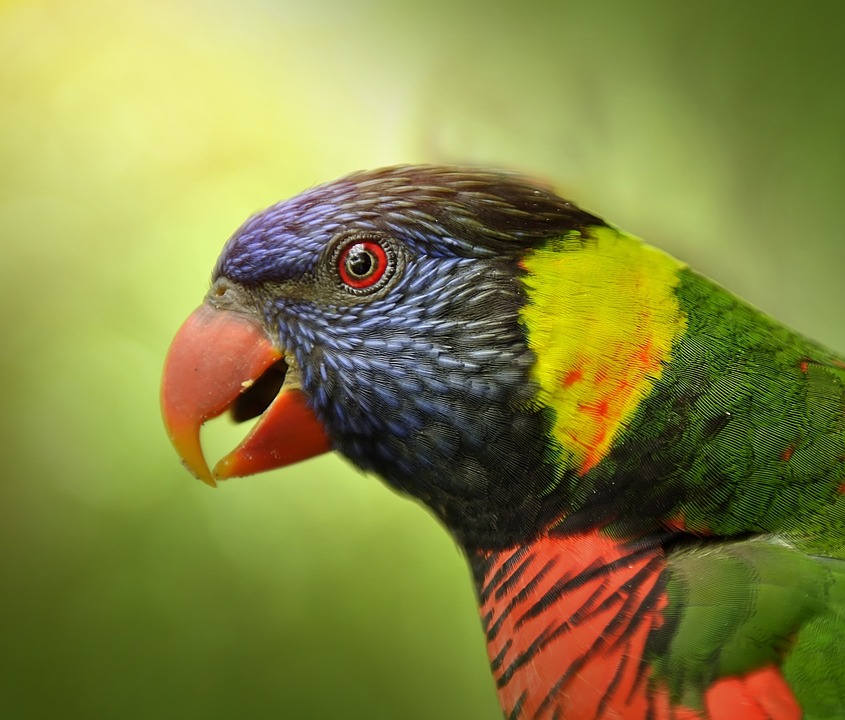Parrots are fascinating creatures known for their vibrant feathers, intelligence, and ability to mimic human speech. However, understanding their behavior can be quite challenging, as they communicate mainly through body language. As a parrot owner, it’s crucial to decode and interpret their body language to ensure their well-being and build a strong bond. In this article, we will explore the various aspects of parrot body language and provide insights into their behavior. Additionally, we will address some frequently asked questions (FAQs) to help you better understand your feathered friend.
Posture and Feathers: The Silent Communicators
Parrots convey a great deal through their posture and feather positioning. Observing these subtle changes can provide valuable insights into their mood and intentions. Here are some key indicators to consider:
– Relaxed Posture: A content and relaxed parrot will have a slightly erect posture, with feathers lying smoothly against their body. Their eyes will be bright, and they may engage in playful activities or preening.
– Feathers Fluffed Up: When a parrot fluffs up their feathers, it indicates that they are trying to maintain body heat or express relaxation. However, if the fluffing is accompanied by a hunched posture, it might be a sign of illness or discomfort.
– Raised Feathers: An erect crest or raised feathers on the head and neck suggests heightened excitement or alertness. Pay attention to their surroundings, as they might be responding to something specific.
Facial Expressions and Eye Movement: Windows to the Soul
Parrots have expressive faces, and their eyes can reveal a lot about their emotions. Understanding their facial expressions and eye movements is crucial for interpreting their behavior. Here are some common cues to look for:
– Dilated Pupils: Dilated pupils usually indicate excitement, fear, or aggression. However, it’s essential to consider the overall body language and the context in which the dilation occurs.
– Pinning Eyes: Rapidly contracting and expanding pupils, commonly known as “eye pinning,” can signify a range of emotions, including curiosity, excitement, or aggression. Again, it’s crucial to consider other body language cues to accurately interpret this behavior.
– Beak Movements: Pay attention to beak grinding, beak clicking, or beak wiping. Grinding often occurs when a parrot is content and relaxed, while clicking might indicate annoyance or a warning sign. Wiping their beak can signify anticipation or nervousness.
Vocalizations: Deciphering the Chatter
Parrots are renowned for their vocal abilities, and their vocalizations play a vital role in communication. While it may take time to understand the meaning behind each sound, recognizing some common vocalizations can be helpful:
– Squawking and Shrieking: Parrots may squawk or shriek to capture attention, express frustration, or communicate their needs. It’s important to determine the underlying cause and address it accordingly.
– Purring or Whistling: These soft, melodic sounds are usually associated with contentment and relaxation. Parrots may purr when they are being petted or snuggled, while whistling can be a sign of happiness or attention-seeking.
– Mimicking Human Speech: Parrots imitate human speech as a form of social interaction or to seek attention. Pay attention to the context in which they mimic words or phrases, as it can provide insights into their intentions.
FAQs: Frequently Asked Questions
Q1: Why is it important to understand parrot body language?
Understanding parrot body language is crucial for assessing their well-being, identifying potential health issues, and building a strong bond with your bird. By decoding their behavior, you can respond appropriately to their needs, prevent stress or aggression, and ensure a harmonious environment.
Q2: Can parrot body language vary between species?
Yes, different parrot species may exhibit subtle variations in body language. It’s essential to familiarize yourself with the specific body language cues of your parrot’s species to accurately interpret their behavior.
Q3: How can I learn more about parrot body language?
To expand your knowledge about parrot body language, consider reading books on parrot behavior, consulting avian experts, or joining online forums and communities dedicated to parrot owners. Additionally, observing your parrot’s behavior regularly and noting any patterns or changes can contribute to your understanding.
Q4: Are there any body language cues that indicate stress or fear in parrots?
Yes, signs of stress or fear in parrots can include flattened feathers, crouched posture, wide eyes, rapid breathing, or hissing. It’s essential to create a safe and enriching environment to minimize these negative emotions and address their underlying causes.
In conclusion, decoding parrot body language is an essential skill for any parrot owner. By observing their posture, feathers, facial expressions, eye movements, and vocalizations, you can gain valuable insights into your bird’s behavior and emotions. Remember, each parrot is unique, so spend time getting to know your feathered friend and building a strong bond based on trust and understanding.









